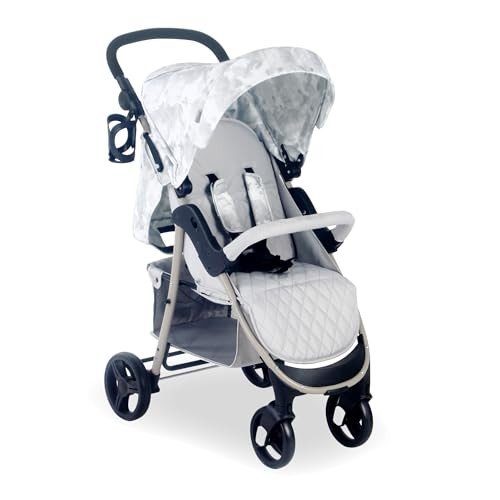How To Choose The Right Pram Or Pushchair On The Internet

Pram or Pushchair: A Comprehensive Guide for New Parents
Picking the right mode of transportation for young kids is one of the first substantial decisions brand-new moms and dads deal with. With various alternatives on the market, the argument between prams and pushchairs can be overwelming. This short article will offer detailed insights into the distinctions between prams and pushchairs, their specifications, benefits and downsides, and what to consider before making a purchase.
Understanding Prams and Pushchairs
At its core, the choice in between a pram and a pushchair lies in their style and intended use.
Meanings:
- Pram: A pram, short for "perambulator," is developed mostly for newborns. It features a flat, carrycot-style seat that enables the baby to rest completely flat. Pushchairs Online are frequently more luxurious and are intended for transporting babies who are not yet sitting up independently.
- Pushchair: A pushchair, also referred to as a stroller, is developed for older babies and toddlers who can sit up. Pushchairs usually have an upright seat and might not recline entirely flat, although lots of designs now use adjustable reclining options for comfort.
Secret Differences:
| Feature | Pram | Pushchair |
|---|---|---|
| Age of Use | Newborn to about 6 months | 6 months to 4 years or more |
| Seating Position | Flat, lying down | Upright or slightly reclined |
| Weight | Usually much heavier | Usually lighter |
| Portability | Less portable due to weight | More portable and easier to fold |
| Use Case | Brief strolls, leisurely walks | Daily use, errands, longer getaways |
Advantages and Disadvantages
Pram
Advantages:
- Comfort for Newborns: Provides a flat surface area favorable to a newborn's developmental requirements.
- Stylish Designs: Many prams featured elegant designs, offering a touch of luxury.
- Storage Space: Sometimes consist of bigger storage choices listed below.
Drawbacks:
- Weight: Generally much heavier and bulkier than pushchairs.
- Minimal Usage: Suitable just for newborns and infants who can not sit up.
Pushchair
Advantages:
- Versatility: Suitable for older babies and young children, often accommodating them for numerous years.
- Lightweight and Portable: Easier to fold and transport, making them ideal for hectic parents.
- Configurable Options: Many pushchairs have adjustable seats and accessories for safety seat and carrycots.
Downsides:
- Comfort for Newborns: Not always suitable for babies in the early months without a correct insert.
- Less Luxurious: Often perceived as less elegant compared to prams.
Making the Right Choice
When it concerns choosing between a pram and pushchair, several elements should be thought about:
1. Lifestyle:
- If moms and dads frequently make long trips or choose walks, a pram may be preferential.
- If they need to navigate through city streets or take public transport, a lightweight pushchair might be more appropriate.
2. Spending plan:
Pricing can vary extensively. Comprehending your financial limitations will assist concentrate on options that satisfy both aesthetic and useful requirements.
3. Adaptability:
Some progressive services include travel systems that allow parents to shift from a cars and truck seat to a pushchair with the very same base, offering maximum versatility.
4. Storage Space:
A pram might take up more space in a car or in the house, while a pushchair's ability to fold down can be a significant benefit in tighter areas.
Frequently asked questions
Q1: Can I use a pushchair for newborns?
A1: Some pushchairs feature bassinet accessories or completely reclining seats, making them suitable for newborns. However, it's important to examine the requirements before usage.
Q2: How do I pick the best design?
A2: Consider your lifestyle, budget plan, and the functions you prioritize, such as weight, mobility, and storage alternatives.
Q3: Are prams and pushchairs safe for my baby?
A3: Yes, both prams and pushchairs are developed with safety features. Look for designs with a 5-point harness, strong brakes, and safe frames.
Q4: How long can I utilize a pram for?
A4: A pram is normally appropriate up until a baby can sit up unassisted, usually around 6 months.
Q5: What are travel systems?
A5: Travel systems are mixes of a safety seat and a pushchair that operate in tandem, permitting simple transitions from cars and truck to pushchair without requiring to eliminate the baby.
Picking in between a pram and a pushchair ultimately comes down to the requirements and way of life preferences of each family. Prams Pushchairs provide comfort and style for infants, while pushchairs provide flexibility and ease for older babies and toddlers. By thoroughly thinking about specific scenarios and requirements, parents can make an educated choice that will make sure safe and satisfying outings with their little ones.
In the end, whether one go with a stylish pram or a useful pushchair, the main goal remains the same-- guaranteeing comfort and security for the child while facilitating convenience for parents.

